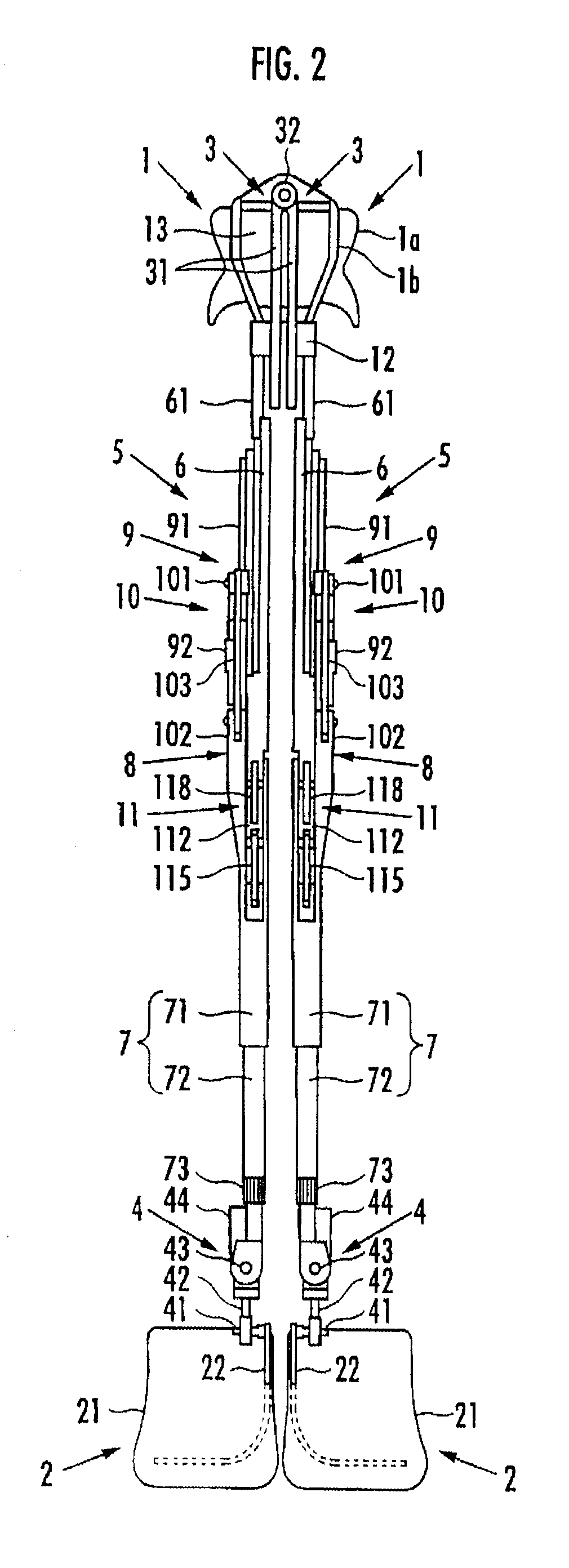Walking Assistance Device
a technology of assistance device and free leg, which is applied in the direction of walking aids, non-surgical orthopedic devices, physical therapy, etc., can solve the problems of increasing the cost disadvantageously, affecting the alleviation effect of user's constraint feeling, forward or backward pushing force applied to the load transfer portion, etc., to improve the stability of the walking assistance device, alleviate the load applied to the user's free leg due to the moment of inertia of the leg link, and the load applied to the user's
- Summary
- Abstract
- Description
- Claims
- Application Information
AI Technical Summary
Benefits of technology
Problems solved by technology
Method used
Image
Examples
Embodiment Construction
[0022]A walking assistance device according to an embodiment of the present invention will be described hereinafter. As illustrated in FIG. 1 and FIG. 2, the walking assistance device includes a seat member 1 as a load transfer portion on which a user P sits astride, a pair of left and right foot attachment portions 2 and 2 which are attached to user's left and right feet, respectively, and a pair of left and right leg links 5 and 5 which are connected to the seat member 1 each via a first joint portion 3 located at the upper end and connected to the two foot attachment portions 2 and 2 each via a second joint portion 4 located at the lower end.
[0023]Each leg link 5 is composed of a freely bending and stretching link which varies a distance between the first joint portion 3 and the second joint portion 4. More specifically, each leg link 5 includes an upper first link portion 6 connected to the seat member 1 via the first joint portion 3 and a lower second link portion 7 connected t...
PUM
 Login to View More
Login to View More Abstract
Description
Claims
Application Information
 Login to View More
Login to View More - R&D
- Intellectual Property
- Life Sciences
- Materials
- Tech Scout
- Unparalleled Data Quality
- Higher Quality Content
- 60% Fewer Hallucinations
Browse by: Latest US Patents, China's latest patents, Technical Efficacy Thesaurus, Application Domain, Technology Topic, Popular Technical Reports.
© 2025 PatSnap. All rights reserved.Legal|Privacy policy|Modern Slavery Act Transparency Statement|Sitemap|About US| Contact US: help@patsnap.com



